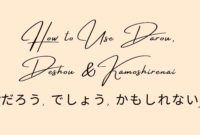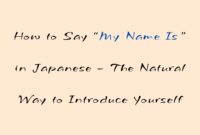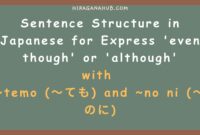Performing Activities Using Tools in Japanese

The Japanese language has a unique sentence structure that differs from
English. One commonly used sentence pattern is Subject + wa + noun
(tool/vehicle) + de + verb. This pattern is used to indicate that an action is
performed using a particular tool or vehicle.
Let’s explore this pattern further through some examples and explanations.
Explanation of the Sentence Pattern
In the pattern Subject + wa + noun (tool/vehicle) + de + verb, the particle
“de” functions to indicate that the preceding noun is the tool or vehicle used
to perform the action.
Example Sentences:
- あみさんはくるまでとうきょうにきました。Ami-san wa kuruma de Tōkyō ni kimashita.
- Ami came to Tokyo by car.
- おとうさんはボールペンでメモを書きました。Otōsan wa bōrupen de memo o kakimashita.
- Father wrote a memo with a pen.
- ももこさんはじてんしゃでがっこうにいきました。Momoko-san wa jitensha de gakkō ni ikimashita.
- Momoko went to school by bicycle.
Usage of the Particle “で” (de)
The particle “de” indicates the tool or means used to perform the action. It
can be a vehicle, writing tool, or any other object that serves as an
intermediary for the action.
Sentence Variations
Here are some other variations of sentences using the same pattern:
- わたしははさみでヤサイのかいものをきります。Watashi wa hasami de yasai no kaimono o kirimasu.
- I cut the vegetables with scissors.
- そのおところはチャリでやけいをもちました。Sono otoko wa chāri de yakei o mochimashita.
- The man carried groceries with a trolley.
- ぼくはコンピューターでゲームをします。Boku wa konpyūta de gēmu o shimasu.
- I play games with a computer.
Vocabulary List
Here are some vocabulary words used in the example sentences above:
- あみさん (Ami-san) – Ami (a person’s name)
- くるま (kuruma) – car
- とうきょう (Tōkyō) – Tokyo
- おとうさん (otōsan) – father
- ボールペン (bōrupen) – pen
- メモ (memo) – memo, note
- ももこさん (Momoko-san) – Momoko (a person’s name)
- じてんしゃ (jitensha) – bicycle
- がっこう (gakkō) – school
- はさみ (hasami) – scissors
- やさい (yasai) – vegetables
- ちゃり (chāri) – trolley
- やけい (yakei) – groceries
- コンピューター (konpyūta) – computer
- ゲーム (gēmu) – game
Using the particle “de” in the pattern Subject + wa + noun (tool/vehicle) + de
+ verb is very useful for expressing how an action is performed using a
specific tool or means. By understanding and practicing this pattern, you can
create more complex sentences and enhance your Japanese language skills.


